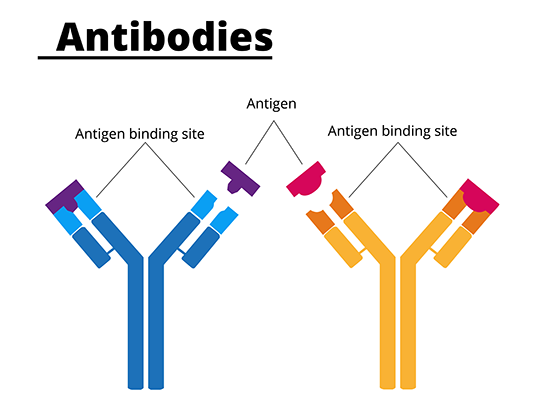 Masakazu Kamata, Ph.D.,
Masakazu Kamata, Ph.D.,
Photography: Lexi CoonThe blood-brain barrier blocks the entry of antibodies into the brain. This limits the potential use of antibody therapeutics to treat brain diseases, such as brain tumors.
Elsewhere in the body, more than 100 United States Food and Drug Administration-approved therapeutic antibodies are used by medical teams to treat cancers and autoimmune, infectious and metabolic diseases. Finding ways to transport therapeutic antibodies across the blood-brain barrier — from the peripheral blood stream into the central nervous system — could create effective treatments that act in the brain.
In a study published in the journal Frontiers in Cell and Developmental Biology, researchers at the University of Alabama at Birmingham report that the site-directed addition of an FDA-approved, biodegradable polymer at the hinge and near hinge regions of the therapeutic antibody trastuzumab effectively facilitated the brain delivery of this human monoclonal IgG1 antibody. Trastuzumab is used to treat breast cancer and several other cancers.
Preliminary work on this novel platform included in vitro and mouse-model experiments. Researchers say the delivery system still needs to be optimized and tested further, yet note their simple methodology converts antibody therapeutics to a brain-deliverable form that maintains the antibody’s medical functionality.
“The concerns of brain-entry haunt the development of brain-disease-targeting antibody therapeutics, impeding the medical translations of laboratory-generated antibodies to clinical practices,” said Masakazu Kamata, Ph.D., leader of the study and an associate professor in the UAB Department of Microbiology. “In this context, this simple methodology has great potential to serve as the platform to not only repurpose the current antibody therapeutics, but also encourage the design of novel antibodies, for the treatment of brain diseases.”
The biocompatible polymer used was poly 2-methacryloyloxyethyl phosphorylcholine, or PMPC, with chain lengths of 50, 100 or 200 monomers. The researchers had already discovered that this non-immunogenic polymer, which the FDA has approved as a coating material for transplantable devices, could bind to two receptors on brain microvascular endothelial cells composing the blood-brain barrier, and those cells could then move the polymer across the blood-brain barrier by transcytosis. Transcytosis is a specialized transport whereby extracellular cargo is brought inside the cell, shuttled across the cytoplasm to the other side of the cell, and then released.
The UAB researchers were able to cleave four interchain disulfide bonds in the trastuzumab IgG1 hinge and near hinge regions, creating thiol groups. Each thiol group was then conjugated to a chain of the PMPC to create trastuzumab molecules with one of the three chain lengths, which they denoted as Tmab-PMPC50, Tmab-PMPC100 and Tmab-PMPC200.
Each of these modified antibodies still maintained trastuzumab-specific binding to cells expressing the HER2 antigen, the target of trastuzumab. Both the Tmab-PMPC50 and the Tmab-PMPC100 were internalized into HER2-positive cells and promoted antibody-dependent cell death, which is the medical functionality by which trastuzumab kills HER2+ breast cancer cells.
The researchers then showed that PMPC conjugation of trastuzumab enhanced blood-brain barrier penetration through the epithelial cells on the blood-brain barrier via the transcytosis pathway. The translocatable Tmab-PMPC100 was the best at efficient blood-brain barrier penetration while retaining trastuzumab’s epitope recognition, the ability of the antibody to bind to its antigen target.
In a mouse model, both Tmab-PMPC100 and Tmab-PMPC200 were about fivefold better at brain penetration than native trastuzumab. In preliminary in vitro and mouse-model experiments, the polymer-modified trastuzumab did not induce neurotoxicity, did not show adverse effects in the liver, and did not disrupt the integrity of the blood-brain barrier.
 The site-directed addition of a polymer on the antibody trastuzumab helped this cancer-fighting antibody cross the blood-brain barrier.“Those findings collectively indicate that PMPC conjugation achieves effective brain delivery of therapeutic antibodies, such as trastuzumab, without induction of adverse effects, at least in the liver, the blood-brain barrier or the brain,” Kamata said.
The site-directed addition of a polymer on the antibody trastuzumab helped this cancer-fighting antibody cross the blood-brain barrier.“Those findings collectively indicate that PMPC conjugation achieves effective brain delivery of therapeutic antibodies, such as trastuzumab, without induction of adverse effects, at least in the liver, the blood-brain barrier or the brain,” Kamata said.
Others have also investigated ways to get cargos like antibodies across the blood-brain barrier, the researchers noted.
In work that led to the current study, the UAB researchers for the current study had shown they could wrap various macromolecular cargos within PMPC shells, and these nanocapsules demonstrated prolonged blood circulation, reduced immunogenicity and enhanced brain delivery in mice and non-human primates.
Yet this system had drawbacks. The nanocapsules required the addition of targeting ligands to bring them to their disease target and degradable crosslinkers that would allow release of the cargo at that site. Unfortunately, disease-associated microenvironments often lack conditions that can trigger degradation of the crosslinkers.
Other researchers seeking to breech the blood-brain barrier have investigated various ligands other than PMPC to boost transport, such as ligands derived from microbes and toxins, or endogenous proteins like lipoproteins. These generally have had undesirable surface properties — such as being highly immunogenic, highly hydrophobic or charged. PMPC does not exhibit those undesirable traits.
Co-authors with Kamata in the study, “Site-oriented conjugation of poly(2-methacryloyloxyethyl phosphorylcholine) for enhanced brain delivery of antibody,” are Jie Ren, Chloe E. Jepson, Charles J. Kuhlmann, Stella Uloma Azolibe and Madison T. Blucas, UAB Department of Microbiology; Sarah L. Nealy and Eugenia Kharlampieva, UAB Department of Chemistry; Satoru Osuka, UAB Department of Neurosurgery; and Yoshiko Nagaoka-Kamata, UAB Department of Pathology.
Support came from National Institutes of Health grants CA232015 and MH130183, an O’Neal Comprehensive Cancer Center at UAB Pre-R01 award, and National Science Foundation grant DMR-2208831.
At UAB, Microbiology, Neurosurgery and Pathology are departments in the Marnix E. Heersink School of Medicine, and Chemistry is a department in the College of Arts and Sciences.